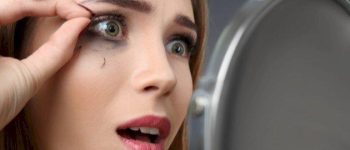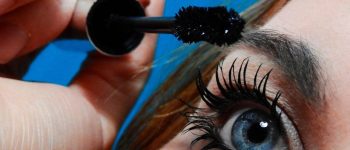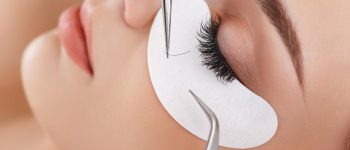Have you ever wondered about the fascinating world of eyelashes? Those tiny hairs that gracefully adorn our eyelids have more to them than meets the eye. From their surface anatomy to their role in aerodynamics, let’s delve into the intricacies of these fluttering wonders.
Surface Anatomy: A Closer Look
In humans, the lower eyelid boasts 75 to 80 lashes, while the upper eyelid flaunts 90 to 160 lashes. Surprisingly, lash length varies from person to person, limited to a maximum of around 12 mm. Once they reach their limit, lashes naturally fall off, making way for new growth. It’s believed that their growth rate and anagen phase (the active growth phase) are shorter than scalp hair, which explains their limited length. Interestingly, eyelashes are unaffected by puberty.
Moreover, lashes exhibit a beautiful curve across all ethnicities. The charming curvature arises from asymmetric cell types along the concave and convex sides of the lash bulb. This delightful asymmetry is also present in curly hair. Comparatively, Caucasians tend to have more pronounced lash curves than Asians. To capture these curves, researchers have successfully employed phototrichography, a technique using photographs to measure the lift-up and curl-up angles of lashes.
Cross-sectional Anatomy: Unlocking the Secrets
Each lash comprises three essential components: the hair shaft, the root, and the bulb. The hair shaft extends beyond the skin, while the root resides beneath it. At the bulb, we find the dermal papilla, which interacts with the lash to support follicle cycling. The inner medulla, surrounded by the cortex, provides strength and rigidity. Additionally, the outer concentric layer, known as the cuticle, acts as an impermeable shield, protecting the lash’s inner structure.
The outermost layer, the cuticle, consists of transparent overlapping scales, forming a protective barrier. Beneath the cuticle lies the cortex, the thickest section of the lash, composed of keratin and melanin.
The lash follicle, responsible for hair growth, embeds itself in the dermis of the eyelid, which has two layers (epidermis and dermis). Interestingly, active lash follicles are more abundant in the upper lid, accounting for 41% of total follicles, compared to the lower lid’s 15%.
While body hair possesses arrector pili muscles that cause hair straightening, lashes lack these muscles. Consequently, lashes remain in their position regardless of external factors like cold temperatures or strong emotions.
Eyelash Pigmentation: A Study of Colors
The process of lash pigmentation is fascinating. Melanocytes, responsible for melanin synthesis, give lashes their color. Surprisingly, lashes tend to turn gray or white much later than scalp hair. Scientists believe that this delay can be attributed to the continued expression of specific enzymes, such as tyrosinase-related protein 2 (TRP-2). In contrast, the depletion of melanocytes and reduced enzyme expression affect scalp hair, leading to earlier graying. However, further research is needed to explore the changes in lash pigmentation with age among different races.
Aerodynamics Around Lashes: Protecting the Window to the Soul
Besides their aesthetic appeal, eyelashes play a vital role in safeguarding our precious eyes. Aerodynamic studies have revealed that lashes should ideally be one-third the width of the eye to provide effective protection. Beyond shielding the cornea from particulate matter, the curved and dense nature of lashes contributes to the aerodynamic flow of air, aiding in corneal protection. While the exact impact of lashes on evaporation remains unknown, no in vivo studies on lashes and corneas have been conducted on humans.
The Life Cycle of Lashes: A Journey of Growth
Lashes possess a unique life cycle, consisting of three phases:
- The growth phase (anagen): During this phase, the root of the lash divides and lengthens the shaft. It lasts between four to ten weeks.
- The degradation phase (catagen): Lashes undergo a transition, converting into a club hair as they disconnect from the blood supply. This phase typically lasts around 15 days.
- The resting phase (telogen): In this final phase, lashes shed, and new ones begin to grow. The resting phase spans four to nine months.
Approximately half of our eyelashes are in the anagen phase, with periocular hair boasting the lowest anagen to telogen ratio. After the telogen phase, the lash falls out, marking the start of a new cycle with the anagen phase. The entire lash cycle takes between four to eleven months.
Compared to eyebrows and scalp hair, the life cycle of lashes follows a slightly different timeline.
Lash Microflora: The Hidden Residents
Bacteria play a role in our lash ecosystem. Common bacteria found on lashes include Propionibacterium, Streptophyta, Staphylococcus, Corynebacterium, and enhydrobacter. In the presence of blepharitis, a condition causing eyelid inflammation, the levels of Staphylococcus, Streptophyta, Corynebacterium, and Enhydrobacter increase. Surprisingly, Propionibacterium tends to decrease in the presence of blepharitis.
Furthermore, as we age, two natural parasites, Demodex folliculorum and Demodex brevis, thrive on our lashes. By the age of 70, almost everyone carries these parasites. While D. folliculorum can be found in eyebrows, scalp hair, ears, and eyelashes, D. brevis primarily resides in the sebaceous oil glands of the face and Meibomian glands. The death of these parasites causes inflammation of the eyelids, leading to the release of inflammatory contents. The presence of cylindrical debris around the lashes is a telltale sign of a demodex infestation.
Eyelashes, often considered a mere beauty accessory, possess a wealth of fascinating features. From their intricate structure to their invaluable role in protecting our eyes, they deserve celebration. So, next time you blink, take a moment to appreciate the wonders of your lashes!
Ekilove embraces the beauty of diversity and aims to provide the best for your lashes.




